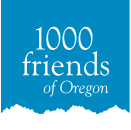
Q: In your own words, what are you doing this summer as our Gerhardt intern, and what does the project you're working on mean to you?
A: I’ll be researching SB 100’s Goal 1, Citizen Involvement. I’ll be looking into the advantages and shortcomings as part of a larger project to figure out the best ways to reform Goal 1. After some personal engagement with the subject, I’m excited to take a DEI lens to the topic.
I’ve lived in Portland my whole life — I’ve always had a passion for Oregon. When I was attending college at Whitman, I decided to take some political science classes, which sparked a passion for public interest law and environmental politics. That same intrigue brought me to Crag Law Center for my previous internship, where I became informed about the unique landscape of environmental politics in Oregon.
Q: What's your take on Goal 1 from the perspective of when it was codified (early '70s) compared to now? I.e. How has it kept pace with our evolving world, or how has it not?
A: Goal 1 was definitely radical in the 1970s. It was kind of unheard of pretty much anywhere to make the civic engagement so prominent. However, after the first acknowledgment period in which cities and counties had to accept the goal, it only got amended once. There’s obviously been a lot of social change in the past 5 decades that would necessitate a shift in both the language of the goal and the implementation of it. With that social change, there’s a brand new spectrum of voices that haven’t been readily able to access these legal proceedings. It’s necessary to take Goal 1 and say “thanks for the groundwork you’ve done so far for Oregon land use” and build from there — how can we reframe it to be more inclusive?
Q: What are the best aspects of Goal 1?
A: It’s a good foundation to work off of. It’s a public participation model that was asserted before the general public was widely considered in planning. This model was pretty revolutionary, but we’ve outgrown that same model. Casting a general, broad net over public participation is not enough. Now it’s time for an advocacy planning route where we advocate for marginalized groups that have been left out of the conversation.
Q: What about Goal 1 needs to change?
A: The language needs to change from citizen involvement to public involvement or community involvement. It’s important, the name has a trickle-down effect on how the goal is applied.
There are 6 parts to the goal, also called administrative rules. One of the six — the communications rule — is not fleshed out at all. It just includes the basic, bare minimum communications standards that any government should require. It’s obvious that just informing communities is not enough to empower and uplift them — which can create mistrust among the public.
Q: What kind of change are you hoping to create with your project?
A: On the statutory level, I think a bill that would revise Goal 1 would be great: with the inclusion of a seventh administrative rule specifying DEI.
On the city and county level, creating regular procedures in which counties and cities have to respond to what they’re doing with DEI. Normalizing going beyond the bare minimum when involving the public would be incredibly impactful. That requires the funding to do so — so making sure there’s money is also vital.
Q: What results would the changes have on Oregon?
A: I think it would really improve the effectiveness of the government and in planning. There would be a lot less hesitancy and mistrust in planners. Generally speaking, when thinking about a broad vision of Oregon, it would help create resilient communities and neighborhoods that celebrate diversity. A lot of change can happen through planning; it has so many tangible benefits and real-world effects.
Stay tuned for the release of Bridget's Goal 1 report sometime later this year. You can stay in the know by making sure you're signed up for our email list.
